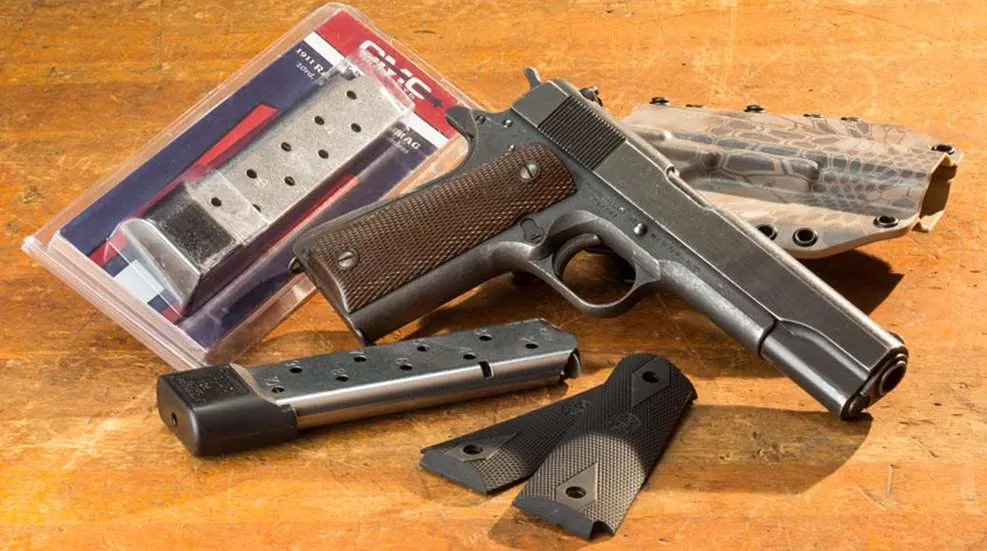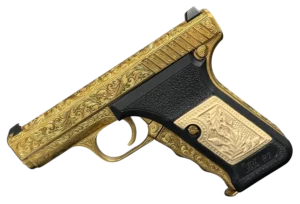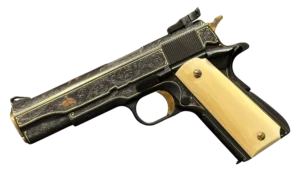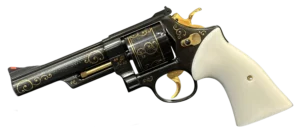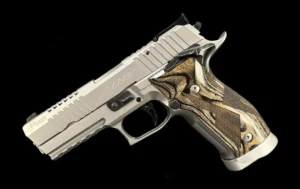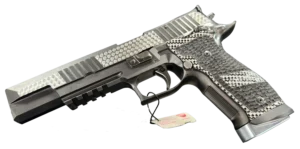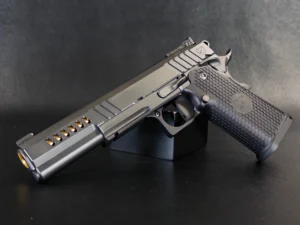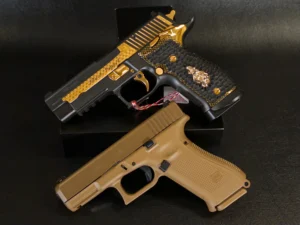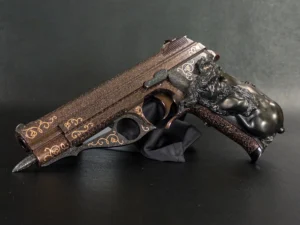Key Takeaways:
- Classic firearms aren’t just weapons — they’re storytellers: Each old gun, from a flintlock musket to a Colt Peacemaker, carries the fingerprints of history. They weren’t made in a vacuum — they were shaped by war, survival, craftsmanship, and culture. And if you listen closely (metaphorically speaking), they’ve still got stories to tell.
- The evolution of firearms was messy, brilliant, and transformative: From hand cannons that barely worked to rifles that redefined warfare, guns didn’t just evolve — they helped rewrite the rules of combat, class, and power. Along the way, they changed the face of empires and altered the social balance. It wasn’t clean, and it wasn’t always noble — but it mattered.
- People don’t just collect antique firearms — they connect with them: Restoring an old rifle or firing a flintlock in competition isn’t about nostalgia alone. It’s about preserving a tactile link to the past. For many, these classic guns represent more than history — they’re a way to hold onto something real in a world that moves too fast.
There’s something undeniably captivating about classic firearms. It’s not just the way they look or the mechanics that click into place with an oddly satisfying precision — it’s the stories they carry. The weight of history in your hand. The weird mix of violence, ingenuity, and art that lives in each piece. Firearms didn’t just show up and start shaping history — they evolved with it, twisted into the DNA of empires, revolutions, frontiers, and ordinary lives.
So, if you’re here, I’m guessing you’re curious. Maybe you’re a collector. Maybe you’ve inherited an old flintlock and just want to know more. Or maybe — like me — you’re just fascinated by how a chunk of wood and metal can carry so much human drama.
Let’s dive in. Not with cold facts, but with a little heart.
Where It All Started: The Birth of Firearms
Long before Glocks and AR-15s, long before cowboy duels and Napoleonic drills, it started with an accident-or maybe a misguided attempt at immortality.
Back in the 9th century, some alchemists were messing around trying to brew the “elixir of life.” Instead, they ended up with a crude explosive. Not exactly what they were aiming for, but hey — it kicked off an arms race that’s still going strong.
At first, gunpowder was more fireworks than firearms — noisy, flashy, chaotic. But it didn’t take long for someone to point that explosive force in a more… practical direction.
Hand Cannons and Chaos
The first real “firearms” — and we’re being generous with the term — were hand cannons. Picture a metal tube strapped to a stick. Light a fuse, pray it doesn’t explode in your face, and boom — you’ve got yourself a terrifying, barely-aimed projectile weapon.
Crude? Absolutely. Game-changing? Also yes.
China wasn’t just lighting fuses. They were launching rockets, building early grenades, and generally shaking up the battlefield. That loud, smoky chaos? It was only the beginning.
Gunpowder Hits the Road
Like most transformative inventions, gunpowder didn’t stay put. It spread. Slowly, then suddenly.
By the 13th century, Europe got its hands on it — possibly via the Silk Road or maybe through contact during the Crusades. Honestly, the history’s a bit fuzzy. But once Europeans got a whiff of it, they started experimenting like mad.
And, let’s be honest, Europeans are rarely subtle when it comes to war tech.
Matchlocks: Lighting the Spark
Enter the matchlock — the first major leap in making firearms something more than a handheld pipe bomb.
Here’s how it worked: a slow-burning cord (literally called a “match”) would be clamped in a mechanical arm. Pull the trigger, the arm drops the match into a little pan of gunpowder, and — hopefully — it all goes bang.
It was still a mess by modern standards. Weather could ruin your match. Reloading was painfully slow. But compared to lighting fuses by hand? This was huge.
Muskets and the Fall of Knights
Matchlock muskets changed everything. Armored knights on horseback? Not so tough when a volley of musket fire can rip through their shiny plate. The whole concept of warfare shifted. Infantry became king. Mass formations, drilled to fire in rotation, took over the battlefield.
And behind it all: slow, smoky, loud matchlocks doing the work.
Flintlocks: When Firearms Got Their Act Together
By the 17th century, the flintlock took center stage — and things got a lot more efficient. No more dangling cords or trying to keep your match dry in the rain.
Instead, a piece of flint struck steel, sparked, and ignited the powder. Cleaner. Quicker. Way more reliable. You could actually count on your gun to fire when you needed it to.
Flintlocks in War and Peace
From the American Revolution to Napoleon’s conquests, flintlocks were everywhere. Muskets with bayonets. Sleek pistols for officers and duels. These weren’t just weapons — they were part of identity, of social rank, of strategy.
And back home? Civilians wanted in, too. Flintlock rifles and pistols were used for hunting, defense, and — let’s be real — a bit of swagger.
In paintings and literature, the flintlock wasn’t just a tool. It was a symbol. A mark of status. Sometimes, even of rebellion.
Let’s Talk Icons: The Firearms Everyone Knows (and Wants)
You’ve seen them in museums. Or movies. Or maybe — if you’re lucky — on your grandfather’s mantle. Certain guns transcend function and become legends. Here are three you’ve probably heard of.
The Colt Single Action Army (a.k.a. The Peacemaker)
If any gun screams “Wild West,” it’s this one.
Introduced in 1873, the Colt Single Action Army revolver — nicknamed the Peacemaker — was a six-shooter with a punch. Cowboys loved it. So did sheriffs and outlaws. And it wasn’t just about the firepower. It was about presence.
You draw a Colt SAA, and everyone in the saloon knows you mean business.
What Made It So Good?
The design was simple but rock-solid. You had to cock the hammer manually for each shot (hence “single action”), but that also made it more deliberate, more accurate. The revolver held six rounds and was chambered in .45 Colt — a cartridge that could drop a man or a horse.
Lawmen like Wyatt Earp carried it. So did Buffalo Bill and countless others. It was more than a weapon — it was part of the myth-making machinery of the West.
Still a Collector’s Dream
Today? Original Colt SAAs can fetch serious money. Even beat-up ones have a kind of charisma that collectors adore. Restoring one feels like restoring a piece of American folklore — not just a firearm.
The Winchester Model 1873
You know the phrase “The gun that won the West”? Yeah — they’re talking about this.
The Winchester 1873 was a lever-action rifle that could spit out shots faster than anything most settlers had ever seen. It was reliable, sturdy, and chambered in the same caliber as the Colt SAA — which meant you only had to carry one type of ammo. Genius, right?
A Rifle for the Frontier
Out on the prairie, you didn’t need fancy. You needed something that worked. In the dust. In the rain. When things got bad.
The 1873 worked. Ranchers used it to protect their herds. Settlers carried it on wagon trails. Even lawmen in remote outposts leaned on it when backup was miles (and days) away.
Why It Still Matters
Collectors prize it not just for what it is, but for what it represents — self-reliance, expansion, grit. The American story, in walnut and steel.
The Mauser 98
Let’s shift gears — from the dusty plains of America to the cold precision of German engineering.
The Mauser 98 bolt-action rifle, introduced in 1898, was a masterpiece of design. It was tough. It was accurate. It was reliable under fire, mud, snow, and chaos.
And it changed military rifles forever.
What Made It a Legend
The Mauser’s action — smooth and strong — became the gold standard. So good, in fact, that other countries started copying it. The U.S. 1903 Springfield? Inspired by the Mauser. So were dozens of other bolt-action rifles in the 20th century.
During both World Wars, the Mauser 98 was the go-to rifle for German infantry. Its ruggedness and accuracy gave it a fearsome reputation. And even after the wars, the design lived on in sporterized hunting rifles and collector circles.
Owning a Mauser
If you’re into historical firearms, a Mauser 98 is almost mandatory. Not just because of what it did — but because of how perfectly it was made.
Why Antique Firearms Still Matter (and Why People Obsess Over Them)
Let’s be real: you don’t need a matchlock musket or an old Colt to go hunting or defend your home today. So why are people still so drawn to these antique weapons?
Because they’re not just tools. They’re time machines.
The Craftsmanship is Wild
These weren’t mass-produced on modern CNC machines. Many were handmade, with engraving, carved stocks, inlays of silver or bone. Gunsmiths back then weren’t just mechanics — they were artists.
Owning an antique firearm is like holding a sculpture that just happens to go bang.
Restoration: A Labor of Love (and Madness)
Fixing up an old firearm isn’t like replacing the battery in a smoke detector. You’ve gotta research. Hunt down period-correct parts. Sometimes even fabricate things by hand. It takes patience — and a good amount of obsession.
But when you finally get it working? When it fires for the first time in decades? It’s like resurrecting history.
The Stories They Carry
Some antique firearms are heirlooms. Others have serial numbers tied to a specific regiment, battle, or historical figure. Each one has a story — or several.
That dent on the stock? Maybe it was from a cavalry skirmish. Or a careless drop in the mud during a hunting trip 150 years ago.
You’ll never know for sure. And that’s part of the magic.
Classic Firearms in Modern Use: Competitions and Reenactments
You’d think these old guns would be locked away behind glass forever. But nope — a lot of them still get out and stretch their legs.
Shooting Competitions
There are events where people show up dressed in period gear, firing flintlocks, muzzleloaders, lever actions — the whole nine yards. And it’s not just about cosplay. These folks are serious.
They’re accurate. Fast. Disciplined. And yeah, a little bit nuts in the best way.
Competitions have strict rules to keep things fair and historically accurate — everything from ammo specs to outfit requirements.
Why It Matters
It’s not just about showing off. These events keep knowledge alive. They preserve skills — like reloading a musket under pressure, or tuning a flintlock’s spark just right — that would otherwise disappear.
Plus, it’s fun. Loud, smoky, and slightly chaotic fun.
In the End, It’s About Connection
You don’t have to be a historian or a gunsmith to appreciate a classic firearm. Sometimes, all it takes is picking one up, feeling the balance, the wear on the grips, the notch of the sights — and realizing: someone, somewhere, held this in a moment that mattered.
Classic firearms aren’t just about steel and wood. They’re about stories. People. Culture. Innovation. Conflict. Art.
They remind us that technology isn’t just about where we’re going — it’s about where we’ve been.
Let them rust in a museum? Maybe. But for many of us, these old guns still have plenty to say — and yeah, a few more rounds to fire.
Frequently Asked Questions
Good question — and no, there’s no strict cut-off date. Generally, when people say “classic,” they mean firearms that are historically significant, mechanically interesting, or culturally iconic. Think flintlocks, Colt revolvers, early Winchesters — the kinds of guns that helped shape a moment in history or told a bigger story.
Because they’re not just guns. They’re time machines. Holding an antique firearm is like shaking hands with the past — you feel the weight, the craftsmanship, the weird quirks of a time when everything was made by hand and built to last. And honestly? There’s just something kind of magical about that.
A lot of them, yes — if they’ve been adequately cared for or restored. But just because you can shoot them doesn’t mean you should. Some folks prefer to keep them as historical pieces. Others enter competitions with them. It depends on the gun’s condition and what kind of story you want to keep telling.
Yep. But also weirdly rewarding. You’re not just swapping out parts — you’re tracking down fragments of history, researching tiny details, sometimes even making parts by hand. It’s half puzzle, half archaeology. Not for the impatient.
Start by avoiding the use of modern solvents or refinishing the wood — seriously. That can tank the value. Your best bet is to check the serial numbers, manufacturer stamps, and any unique markings. Then, talk to a reputable collector, appraiser, or museum professional. The condition, rarity, and history behind it will all factor in.


